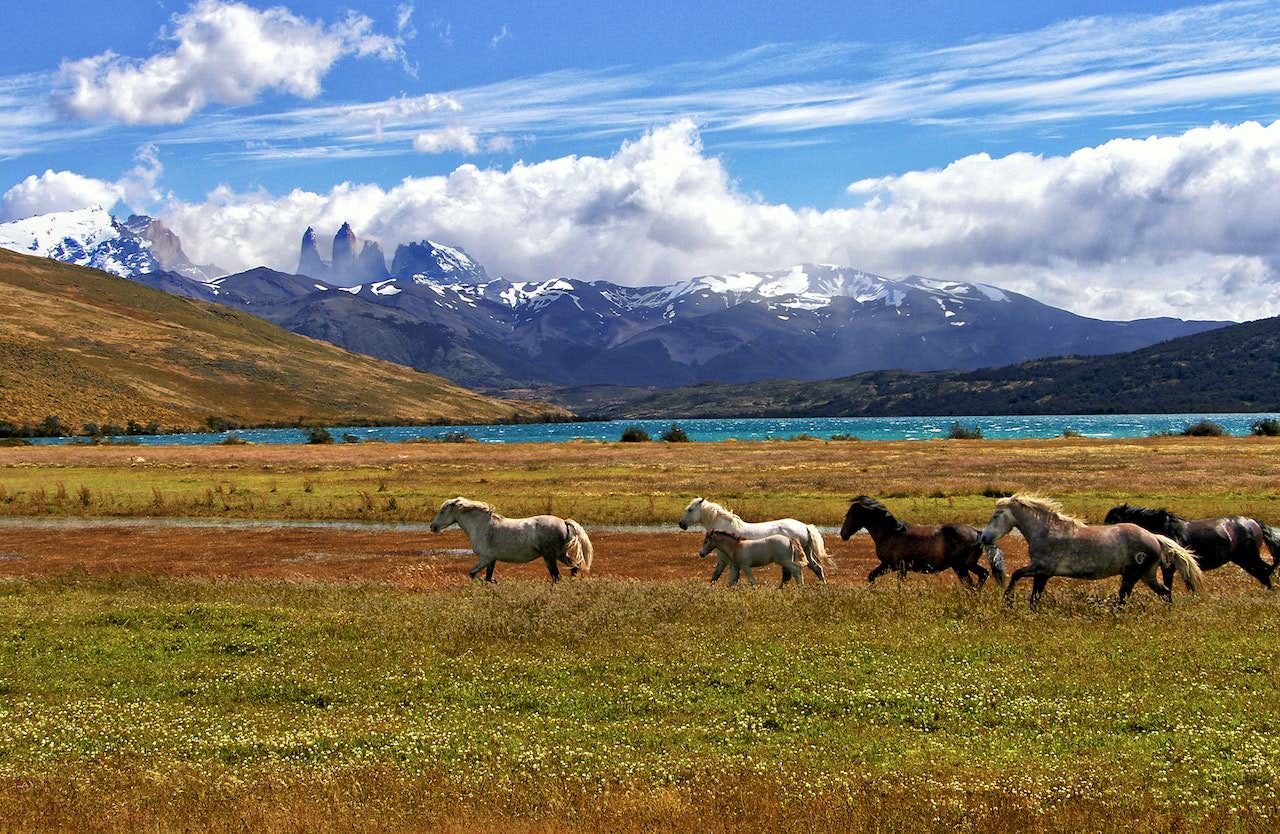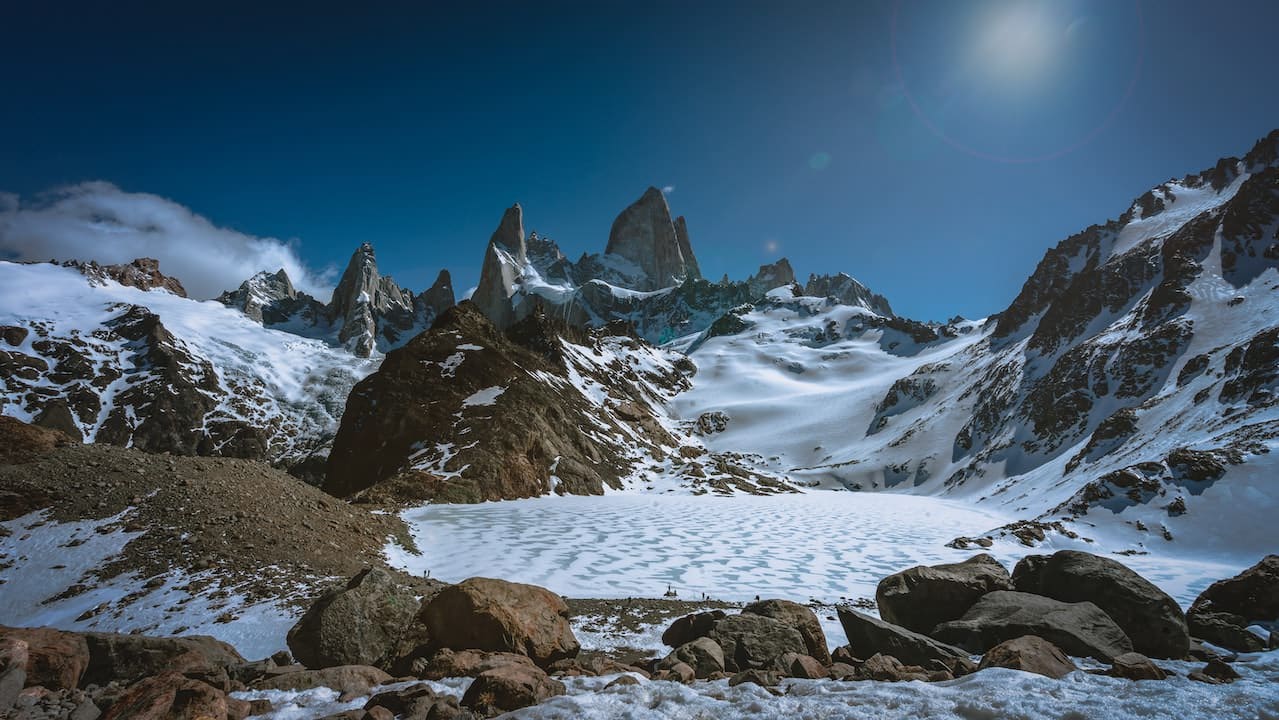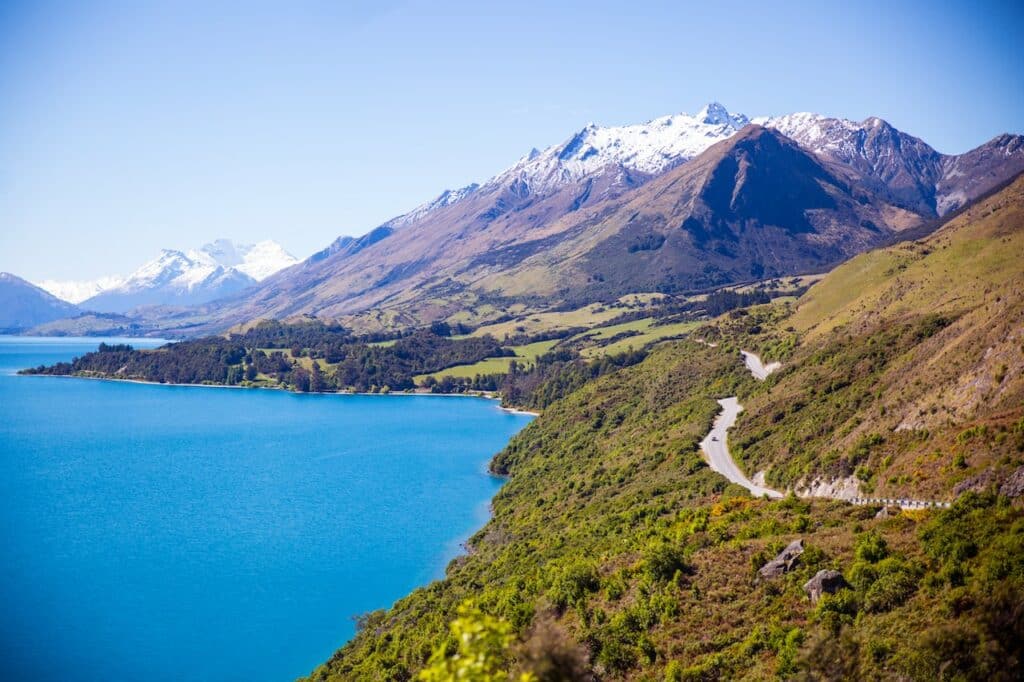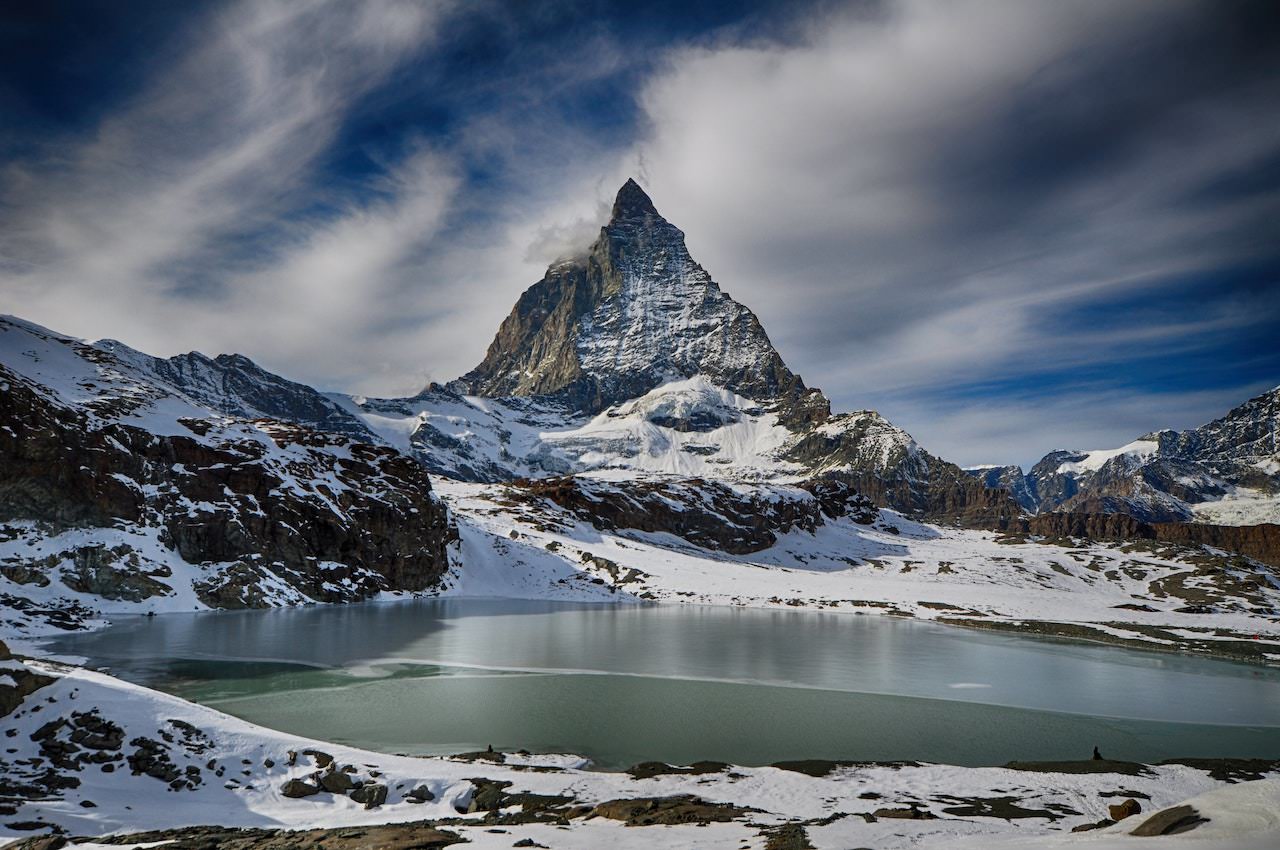Last updated on January 21st, 2023
If you want to capture the beauty of nature, landscape photography is the way to go. From picturesque mountain peaks to tranquil ocean waves, you can capture it all with a camera and a good eye. Let’s dive into what landscape photography is and how you can create stunning photos that will make everyone stop and take notice.
Landscape Photography Meaning
At its core, landscape photography involves taking photos of natural scenes outdoors — mountains, forests, deserts, sunsets, sunrises, valleys, great plains, and sometimes seascapes. It’s one of the most popular forms of photography because it allows people to capture the wonders of nature in a single frame.
Landscape photos generally have an expansive depth of field, which means that everything in the frame — from foreground elements to background elements — is all in focus. This type of photo offers an immersive experience for viewers; they feel like they’re right there in the scene itself.
Is there a difference between nature and landscape photography?

Nature photography and landscape photography are two distinct styles of photography with a mutual crossover, although often confused as the same.
Nature photography focuses on capturing the transient beauty of wild plants, creatures, and environments in their natural habitats. It requires a greater understanding of biology and is usually done in smaller spaces than landscape photography, which captures scenery such as mountains, lakes, forests, and rivers.
While nature photographers often need to patiently wait for the right subject or movement to take the perfect shot, landscape photographers can focus more on the composition and design elements of a larger area.
In summary, there is a difference between nature and landscape photography, but both can share similar minor subjects. Both styles have their place in the field of photography; it all depends on what type of beauty an artist wants to display.
Why is Landscape Photography Important?
Landscape photography captures moments that have a unique and singular beauty. It offers the photographer and viewers alike a glimpse of places or periods in time which will never be replicated.
This art form is vital to our collective visual consciousness, enabling us to revel in everything from the breathtaking expanse of a desert landscape to the subtle textures of moss on a boulder.
By developing our appreciation for nature through landscape photography, humans can more deeply connect with the environment.
We are reminded of how powerful and encompassing nature is, and how even small gestures have significance in creating significant and lasting change.
Landscape photography shows us that our relationship with nature is not only crucial but also precious; viewing these images helps bring into focus what is most important — our fragile connection to the natural world.
Tips for Taking Stunning Landscape Photos
When it comes to taking great landscape photos, there are a few tips you should keep in mind:
Get up early – Getting up before dawn gives you access to some beautiful morning light that will make your photos look even more stunning. Plus, fewer people are out and about at this time, so your shots won’t be cluttered with distractions.
Find unique perspectives – Don’t just shoot from eye level; get creative and find interesting angles that will make your photos stand out from all other landscape shots out there. Climb rocks or trees if you need to get a better vantage point.
Use filters – Filters are very useful when shooting landscapes. They can help reduce glare from water surfaces or give your skies more depth and texture. Just remember not to overdo it; use filters sparingly for the best results.
Use High Dynamic Range Photography – Utilize the HDR photography workflow and HDR software to photograph dynamic scenes during the twilight hours.
Amazing Places for Landscape Photography
Landscape photography can be a beautiful and rewarding experience, but where you go to take your photos can make or break the results.
Taking landscape shots in an inspired setting, such as the coastlines of Cinque Terre or near iconic landmarks like the Taj Mahal, can create breathtaking visuals that will light up any portfolio.
Other picturesque locales, such as Yosemite National Park or the misty golden hills of Scotland, also offer stunning backdrops for natural scenery captures.
However, it does not always have to be wild and remote places; urban settings like towering skylines and winding city streets can also be excellent for capturing unique and memorable shots.
Furthermore, with a bit of creativity and exploration, even your own backyard can prove to be a great place for unforgettable shots.
Nonetheless, here are recommendations for five places to do landscape photography:
1. Iceland

Iceland is one of the premier destinations for landscape photography, and for good reason.
With its awe-inspiring thundering waterfalls, snow-capped mountains, sprawling glaciers, colorful geothermal springs, and mystical coastlines, Iceland’s breathtaking views provide the unmistakable opportunity to capture magnificent moments that will be cherished for a lifetime.
Whether you are an amateur photographer wanting to practice or hone in on one’s skills or a professional looking for a new challenge, Iceland can satisfy both needs with an ever-changing array of landscapes to explore.
There is no shortage of inspiration within this small island country, and with 24 hours of light each day during the summer months, it offers plenty of time to soak up the natural beauty that it has to offer.
2. Jasper National Park, Canada

Canada’s Jasper National Park is a photographer’s paradise and offers a unique opportunity to capture the beauty and grandeur of the Canadian Rockies.
From jagged mountain peaks and thundering waterfalls to brilliant turquoise lakes, wildflower meadows, and Alaskan-style glaciers, Jasper is the perfect destination for landscape photography.
The park’s pristine views stretch as far as the eye can see, painting a postcard-perfect backdrop for stunning outdoor shots. With plenty of windy hiking trails, open meadows, cool rivers, ice fields, and evergreen forests to explore, you will be absolutely spoiled for choice when it comes to captivating subjects.
Whether it’s majestic mountains or lush valleys in view — Jasper National Park encourages photographers of all levels to submerge themselves in the gorgeous promises of mother nature.
3. Patagonia, Argentina and Chile

Patagonia in Argentina and Chile is an incredible destination for landscape photography. With the vibrant colors and impressive mountains, glaciers, and fjords, there is no shortage of beauty to capture.
Not to mention the Patagonian steppe, a unique grassland that has been untouched by human life for centuries and offers views of extraordinary wildlife, including guanacos, maras, rheas, and foxes.
Between its ever-changing weather patterns and its abundance of sights on land or sea, Patagonia provides the perfect backdrop for anyone looking to challenge their artistic capabilities by exploring the wonders of nature through photography.
4. Queenstown, New Zealand

Queenstown is truly photogenic for landscape photographers. From the shimmering blue waters of Lake Wakatipu to the majestic snow-capped peaks of the Southern Alps, every corner of Queenstown offers something breathtakingly beautiful.
Whether you want sweeping views from a panoramic viewpoint or close-up detail shots, Queenstown will provide endless opportunities to capture stunning images.
There are countless trails and roads to explore, all with a distinct charm — perfect for telling your own unique story through pictures. With days filled with brilliant sunshine and starry evenings painting spectacular sunsets over the lake, how could anyone resist coming here to photograph these wonders of nature?
5. Zermatt, Switzeraland

Zermatt in Switzerland is iconic for landscape photographers. With the Matterhorn — one of the most famous mountain peaks on Earth and the logo of the Toblerone chocolate — dominating the skyline, photo opportunities seem endless everywhere you turn.
From panoramic views to mysterious trails and charming villages, any professional or amateur photographer will be inspired by this beautiful region.
Whether glacial settings, breathtaking valleys, or still water are your thing — Zermatt is known for its enticing and diverse photographic locations.
Absolutely no filter is needed to capture its beauty. So come experience this amazing environment; Zermatt will take your breath away and leave you with unforgettable photos.
Ansel Adams and Landscape Photography

Ansel Adams was a master of the American landscape — from his iconic shots of Yosemite National Park to the less well-known yet still mesmerizing desert scenes he captured.
His composition, use of light and texture, and attention to detail created works of art that are breathtaking even today. But there was much more to Ansel Adams than his photography.
He was an admirable activist for conservation initiatives and even had an influence on photography-related technologies such as film development techniques.
In short, Adams remains one of the most famous photographers in history not only because of his stunning photographs but also because of his commitment to protecting America’s natural beauty and furthering photography technology.
Conclusion
Landscape photography is an incredibly rewarding form of photography that allows us to explore nature through our own lenses. Whether you’re shooting mountains or oceans, or forests, capturing these breathtaking scenes in a single frame can be quite satisfying once you learn all the techniques involved.
So don’t be afraid to go outside and explore with your camera — you never know what kind of amazing shots you’ll discover.
Frequently Asked Questions
What is abstract landscape photography?
Abstract landscape photography blurs the boundaries between reality and fiction, capturing scenes that are both real and imaginary. It involves the use of various techniques such as intentional camera shake, double exposure, distortion lenses, stacking multiple photographs into one image, and digital manipulation.
With its focus on hidden shapes and intricate details, abstract landscape photography allows photographers to create works of art by emphasizing lines and forms in nature. The surreal images produced through this style of imaging can provide a refreshing perspective on landscapes that can be found mundane or overexposed.
Abstract landscape photography encourages viewers to slow down and observe their natural environment more deeply, inspiring them to pause their lives, even if just for a few moments.
How much does a landscape photographer make?
Becoming a landscape photographer is a great way to make a living doing something you love. With its stunning scenery, outdoor settings, and challenging deadlines, this career can be both financially rewarding and highly satisfying.
How much can you make as a professional landscape photographer? Depending on your work experience and the demand for your images, salaries range from a part-time or freelance income of around $30 per hour to full-time salaries in excess of $70,000 — the world really is your oyster.
Creative flair and technical expertise brought together with dedication can open up doors to all kinds of opportunities. If the idea of making money while capturing the beauty of nature appeals to you, then there’s never been a better time than now to get started as a landscape photographer.
You also need to realize that new professional photographers make little to no money when you include the cost of equipment. You have to build up your brand to make a decent living.
What is the best lens for landscape photography?
Landscape photography can produce truly stunning images, so it’s important to have the right lens for capturing the beauty of nature.
Wide-angle lenses are a great starting point, as they can encompass a wider depth of field than other stock lenses. Prime lenses are also a wise choice because their fast aperture settings allow you to capture images in low light while reducing distortion.
Additionally, zoom lenses can help you get the detail shots you want without having to get too close to your subject.
All of these lens types will give you an excellent opportunity to capture jaw-dropping landscape shots with crisp detail and vivid color. But when in doubt, the best lens for landscape photography is a wide-angle zoom lens with a focal local length of 10-18mm.

